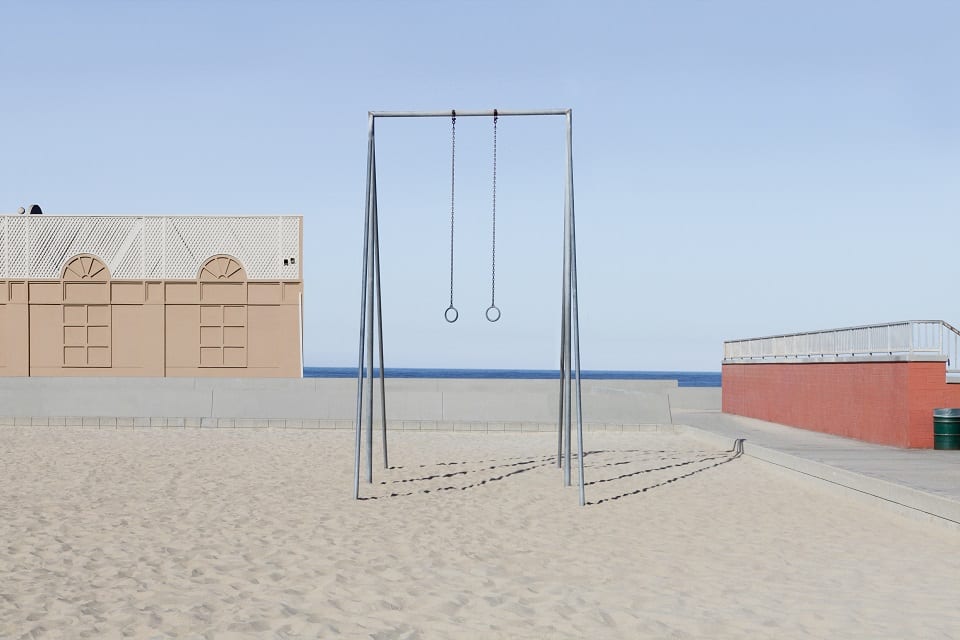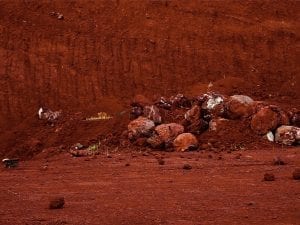French artist Lauren Marsolier (b. 1972) – now based in Los Angeles – has developed a style that alleviates the world of specific details. Perceptual compositions alienate viewers through bright and equivocal landscapes, which are haunted by unidentifiable sources of lighting. Her work is displayed at PHOTOFAIRS San Francisco this weekend, courtesy of Robert Koch Gallery.
A: Your work is being displayed as part of the Insights: New Approaches to Photography since 2000. How do you think this event will help to develop your career, and why do you think that fairs like this are so important to both artists and collectors?
LM: Fairs are huge events for both artists and art lovers. They have become key in developing artists and galleries visibility in the international arena. With so many diverse works to look at, I find them both very exciting and overwhelming. For this reason I love that PHOTOFAIRS | San Francisco is organising a curated exhibition, allowing our mind to pause and focus on one particular theme for a moment. I am happy and honoured to be part of their selection.
A: How do you think that your images feed into or separate themselves from contemporary notions of photography, making a case for how it has developed into the 21st century?
LM: My photographic practice has only become possible in the 21st century, with the advance of digital technologies. I construct each image from sections of multiple photographs. It is a slow process, quite different from the instant quality that characterises the medium. It requires shooting a huge amount of photographs, that I later use as raw material. It is a new way to make a photographic image, in which I see the opportunity to experiment with a new visual language.
A: Many of your pieces depict alienating landscapes. What is it that you’re trying to communicate to your viewers through tonal flatness and often a lack of identifying elements?
LM: I attempt to construct my images so they can be perceived in multiple and conflicting ways: both familiar and alienating, real and fabricated. My intention is to give a visual form to the elusive and disorienting feeling, one often gets, living in a globalising world that has lost its former reference marks and where the borderline between the “real” and the simulated has been getting increasingly blurry.
For example, I often use tonal flatness to contradict the feeling of expansiveness one usually gets looking towards the horizon. I like the horizon to “feel” like a backdrop. The lack of identifying elements allows me to make the place more generic, somehow “placeless”, and opens up my composition to multiple interpretations. I try to build my pictures in a way that feels like the landscape or its image could be fake, even though the various clues giving away the fabrication might not be immediately obvious.
A: Could you discuss how you use post-production and how this contributes to your overall understanding of photography in the modern world?
LM: Post-production is an integral part of my practice. My images are composed digitally. I construct my images in a way that the landscapes are almost plausible. They can be taken for reality, although one usually feels something’s amiss. I combine multiple perspectives, lighting sources, and distances to produce disorientation in the viewer. This approach allows me to represent the world photographically without showing a specific place, focusing instead on a mental experience, going beyond what is immediately visible.
A: One of the event’s emerging themes is a consideration of how photographs are defined. Do you think that your Transition series is an argument for reinventing perceptions?
LM: I shot films and used a darkroom for many years before turning to digital technologies, around 2004. My process is now so different from what it used to be that I almost feel like I have changed medium, even though it still bears the same name. The notion of what a photograph might be has been hugely expanded. I am very engaged in investigating the new possibilities of the medium.
A: How do you respond to the notion that medium is spreading – both in quantity and quality – in a digitalised and surveillance-based society?
LM: Photography, but really images, simulation in general have become so ubiquitous that we are being forced to re-negotiate our notion of the “real.” Our lives are increasingly lived through mediated experiences. The changes in how we experience the world are happening really fast and it is not always easy to adjust psychologically. This causes us to periodically feel disconnected or alienated from our environment. These issues are at the core of my work.
A: How do you think that your work compares – thematically and stylistically – to other exhibitors?
LM: I am not familiar with all the other exhibitors, but I see a general tendency to move away from indexicality and be engaged in the physicality of the image. Through various approaches (or styles), many of the artists featured make their medium the subject of their investigation, either directly or indirectly. I feel connected to this concern. I see my landscape as deceptive windows onto the world, making you question what you are looking at.
A: What other projects do you have coming up this year?
LM: My latest series DISLOCATION, which I showed at Robert Koch Gallery in San Francisco and Galerie Richard in New York last year, will be exhibited in Paris, at Galerie Richard, and in Poznan (Poland) at the Zamek Cultural Center.
PHOTOFAIRS runs 27-29 January. For more information: www.photofairs.org/sanfrancisco
Marsolier appears in Issue 74 of Aesthetica Magazine. To pick up a copy: www.aestheticamagazine.com/shop
Keep up-to-date with the latest information about PHOTOFAIRS and other major arts events @AestheticaMag
Credits:
1. Playground 3 (2011). Lauren Marsolier courtesy Robert Koch Gallery, San Francisco.





